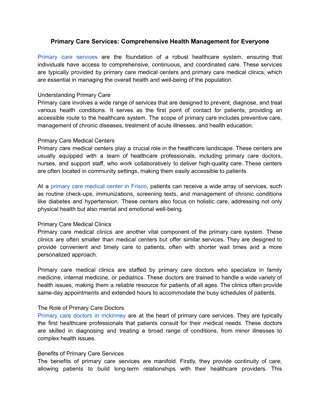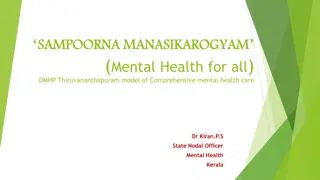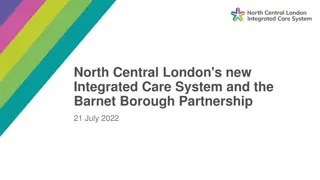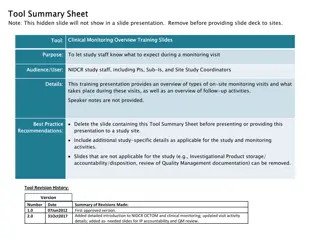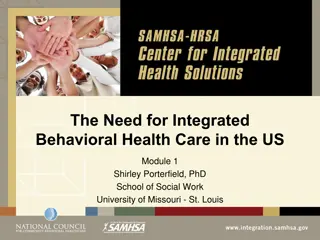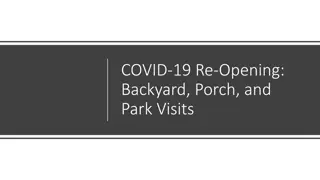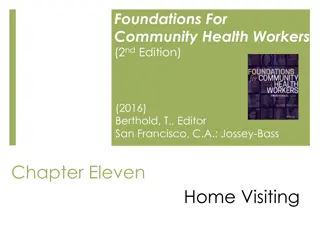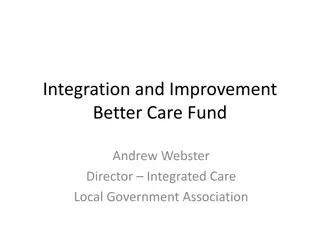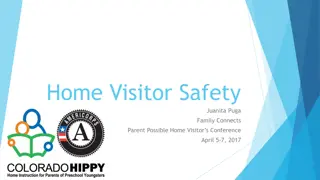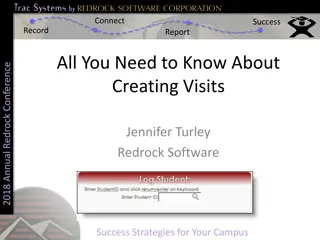Overview of Home Visits in Health Care
Home visits in health care involve meeting individuals at their doorsteps to address health needs, establish relationships, identify problems, plan care, and supervise health workers. Reasons, principles, and advantages of home visits are discussed, emphasizing the importance of quality care over quantity and the need for sensitivity, planning, and evaluation in these visits.
Download Presentation

Please find below an Image/Link to download the presentation.
The content on the website is provided AS IS for your information and personal use only. It may not be sold, licensed, or shared on other websites without obtaining consent from the author.If you encounter any issues during the download, it is possible that the publisher has removed the file from their server.
You are allowed to download the files provided on this website for personal or commercial use, subject to the condition that they are used lawfully. All files are the property of their respective owners.
The content on the website is provided AS IS for your information and personal use only. It may not be sold, licensed, or shared on other websites without obtaining consent from the author.
E N D
Presentation Transcript
DEFINITION DEFINITION Home visit refers to meeting the health needs of the people at their doorsteps.
PURPOSE -to know the family and establish working relationship with the members -to identify the health problems and to investigate associated causes of problem -to plan and implement care with the family -to follow up treatment and care given by the family and to evaluate health care -to supervise and guide health workers in giving family health care PURPOSE
Reasons for home visit -home visit is the backbone of all the MCH services -the vast majority of sick people are in the home -investigation can be done to rule out the source of infectious diseases -new health problems can be identified -follow up services can be done easily Reasons for home visit
PRINCIPLES -home visit should be planned on the basis of need -plan for a regular home visiting programme based on the priorities -be sensitive to the persons feelings and needs at the time of the visit -collect fact about family and its members, environment and analyze the fact as an initial step in visiting the home
-listen to the family and understand the other persons point of view -be sure of the scientific soundness of what you discuss with the family -use safe technical skills and nursing procedures -be aware of the community resources and use them wisely and appropriately -plan and work with the client and the family jointly
-evaluate the work intermittently. Quality of care is more important than the number of home visit -make a note of important facts about the home visits made in the diary -record the relevant facts in the individual health records or in the family folder in each visit -be understand the agencies policies and rules while performing the home visit
Advantages -community health nurse sees the individual and his family in his own environment -gives an insight to the family situations -helps in basic understanding of the physical and emotional needs of the individual -helps in applying the gained knowledge and skills in home settings -family members will be more relaxed in their own surroundings Advantages
-health teaching will be more realistic in actual situation -family practices can be observed -family gains confidence and feels free to clear the doubts -give a chance to meet the other family members -gives an opportunity to look for new problems
Components/phases/steps of home visit 1. Initiation phase and fact finding Components/phases/steps of home visit 2. Examination and analysis of fact 3. Planning action with the individual family 4. Action 5. Use of expert technical skill 6. Follow-up 7. Evaluation of services
1.Initiation phase and fact finding -introduce yourself -establish a friendly relationship -study the clinical and other records -observe inside and outside the home for good and bad factors -use simple language -discuss what has been done and what the family wants to do for the problem and what plans the family will have for the future 1.Initiation phase and fact finding
2.Examinaton and analysis of facts -when the fact have been collected , the process of examining and analyzing begins -it is important to remember that true, honest analysis is based on fact and not on opinion -the personal, economic, emotional and the spiritual aspects taken together constitute the usual health problem 2.Examinaton and analysis of facts
3. Planning action with the individual family - Planning action with the individual family is of great importance in all your work and relationships -preparation of detailed action or plan to complete in all respects for the implementation of an activity -plan should be acceptable and can be easily followed by the family members 3. Planning action with the individual family
4. Action -what you do should depend on the first 3 steps in the visit -even though you enter the family with a definite idea and plan of what you will do , you must be prepared to alter the plan to meet the need that exists at the time of visit 4. Action
5.Use of expert technical skill -every professional worker need tools and special skills -use of knowledge and special skill are essential to successful work -community health bag provide the nurse with the tools she needs to detect early signs and symptoms of disease so that her report to physician will be correct and intelligent 5.Use of expert technical skill
6. Follow - Most important step in home visit 6. Follow- - up up - follow up of persons undergoing domiciliary treatment in chronic diseases eg. leprosy, TB - to know the progress of disease condition - To check any change is needed in nursing action
7. Evaluation of service -community health nursing care results are not always immediately obvious -it take months and sometimes years to see accomplishments -there are some failure in your part and some failure in families part -be sure to analyze failure and acknowledge them to sure that your time is wisely spent -qualitative and quantitative evaluation -formative and summative evaluation 7. Evaluation of service
Establish a friendly relationship make a survey and prepare a map collection of data and analysis establish goals prepare a plan of action nursing interventions interpretation of results follow up evaluation
Plan for visit Frequency of visit may be determined by -degree of illness -physicians orders -ability of family to give care
Problems of home visit and possible solutions 1.Consume lot of energy and time -CHN has to make a trip from their place to home -new nurses and students who are not oriented to the area Solution -nurse has to make proper plan, proper street map knowledge and orientation to the area prior to the visit 1.Consume lot of energy and time Solution
2. Unseen events -the family which is to be visited is not having similarities -there may be good or bad things in the family because the family members will be drug addicts, alcoholics, rowdy etc Solution -cancel home visit temporarily -assistance from the neighbours and leaders -develop good relationships 2. Unseen events Solution
3. Non acceptance -cultural differences , personal characteristics, socio economic status Solution -describe the purpose of visit -behave in a friendly and professional manner 4. Problem of local language 5. Role confusion -due to lack of knowledge, individual/ family may fail to understand the role of nurses 3. Non acceptance Solution 4. Problem of local language 5. Role confusion
Essential equipment required for home visit Essential equipment required for home visit -community bag -family folder -health education material -other equipment as per requirement such as immunization kit, postnatal care kit, antenatal kit etc.




